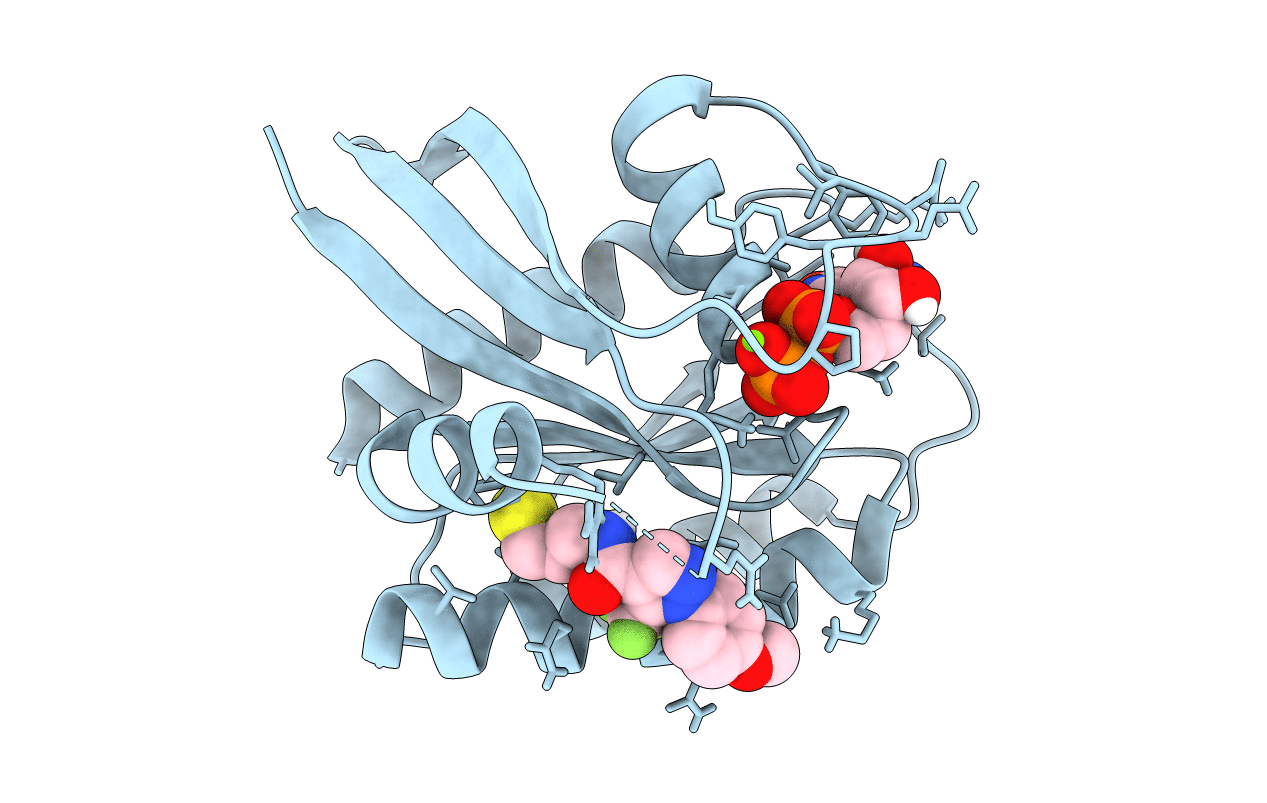
Deposition Date
2017-03-29
Release Date
2017-10-25
Last Version Date
2023-10-04
Entry Detail
PDB ID:
5VBE
Keywords:
Title:
Crystal Structure of Small Molecule Disulfide 2C07 Bound to H-Ras M72C GDP
Biological Source:
Source Organism:
Homo sapiens (Taxon ID: 9606)
Host Organism:
Method Details:
Experimental Method:
Resolution:
1.57 Å
R-Value Free:
0.20
R-Value Work:
0.17
R-Value Observed:
0.17
Space Group:
H 3 2


